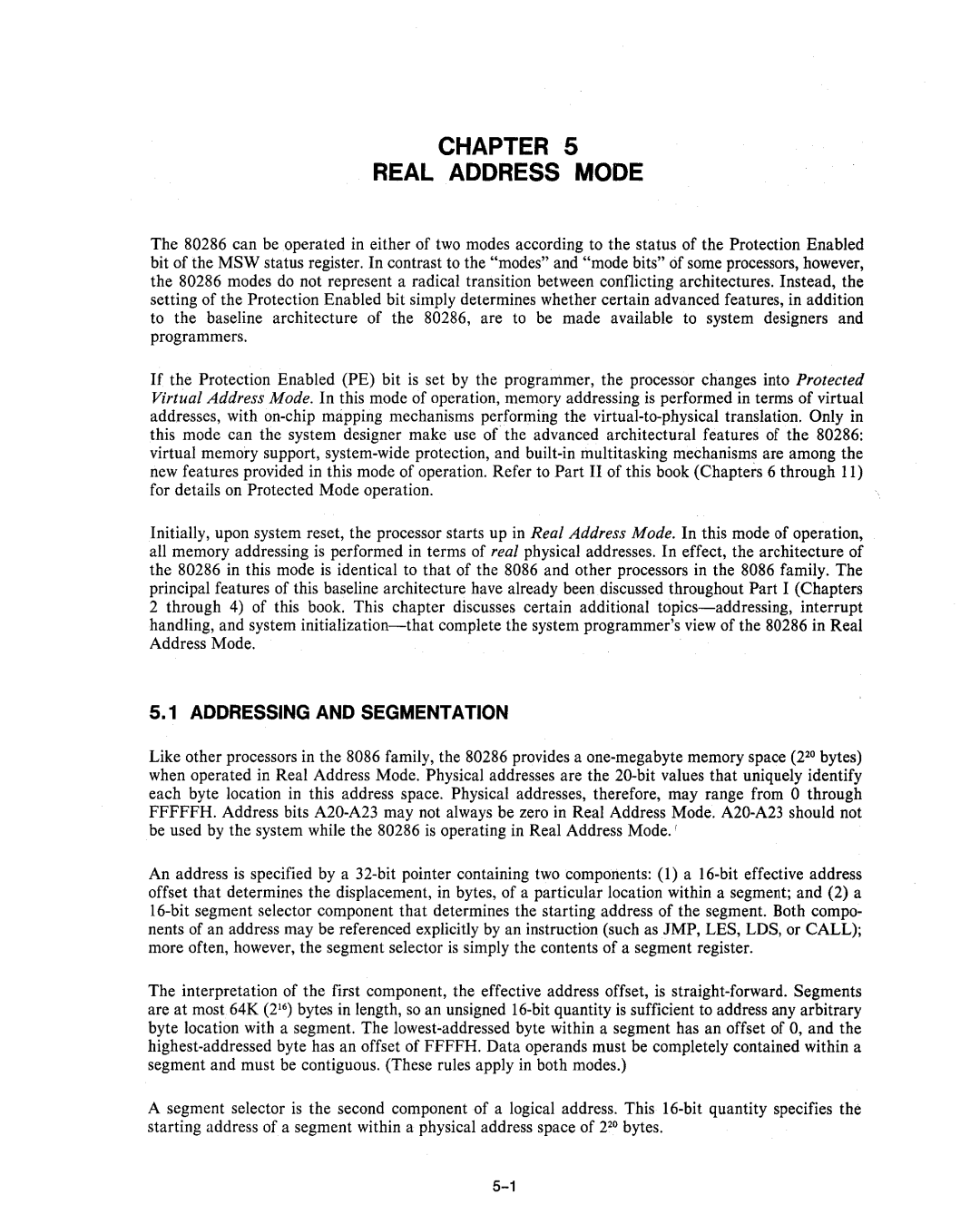
CHAPTER 5
REAL ADDRESS MODE
The 80286 can be operated in either of two modes according to the status of the Protection Enabled bit of the MSW status register. In contrast to the "modes" and "mode bits" <if some processors, however, the 80286 modes do not represent a radical transition between conflicting architectures. Instead, the setting of the Protection Enabled bit simply determines whether certain advanced features, in addition to the baseline architecture of the 80286, are to be made available to system designers and programmers.
If the Protection Enabled (PE) bit is set by the programmer, the processor changes into Protected Virtual Address Mode. In this mode of operation, memory addressing is performed in terms of virtual addresses, with
Initially, upon system reset, the processor starts up in Real Address Mode. In this mode of operation, all memory addressing is performed in terms of real physical addresses. In effect, the architecture of the 80286 in this mode is identical to that of the 8086 and other processors in the 8086 family. The principal features of this baseline architecture have already been discussed throughout Part I (Chapters 2 through 4) of this book. This chapter discusses certain additional
5.1 ADDRESSING AND SEGMENTATION
Like other processors in the 8086 family, the 80286 provides a
An address is specified by a
The interpretation of the first component, the effective address offset, is
A segment selector is the second component of a logical address. This
